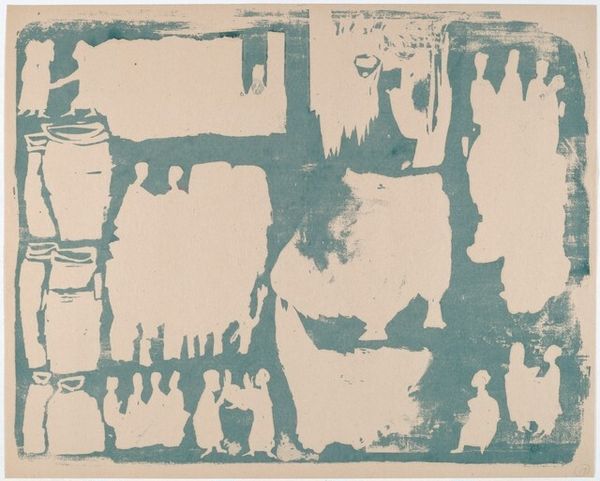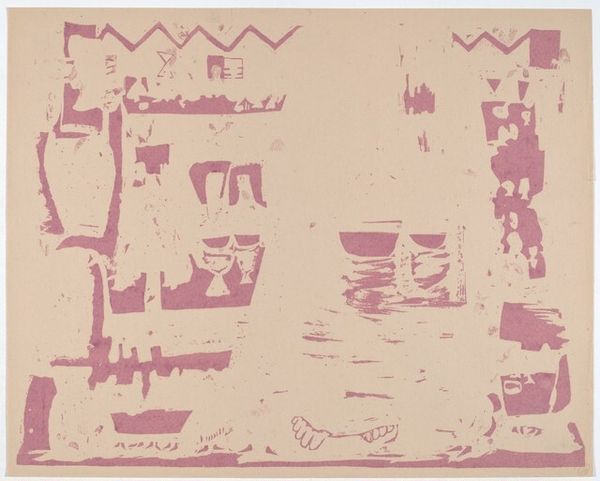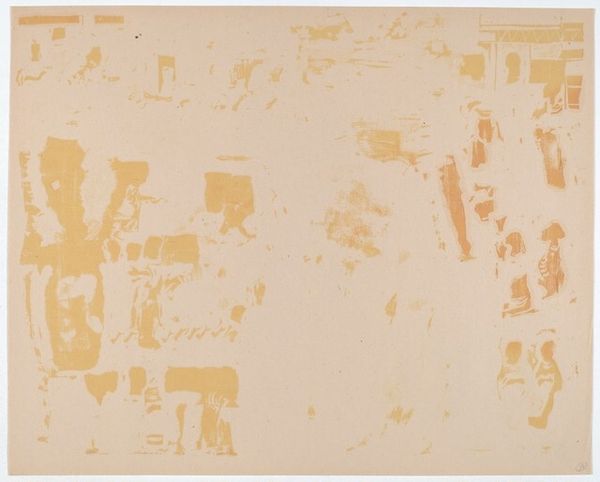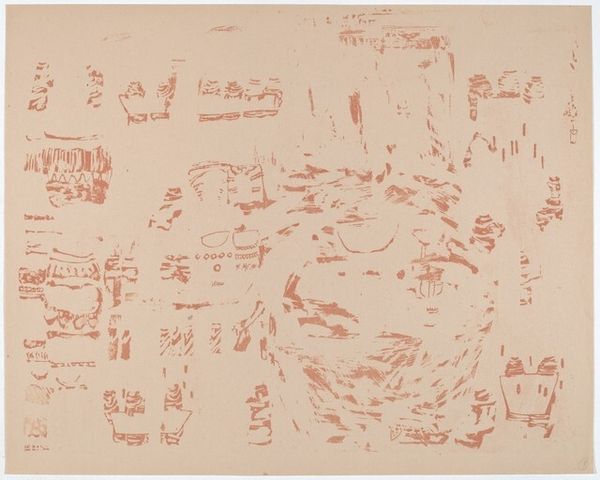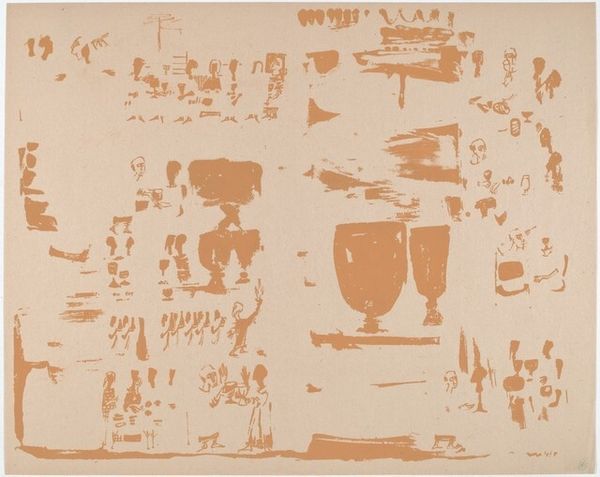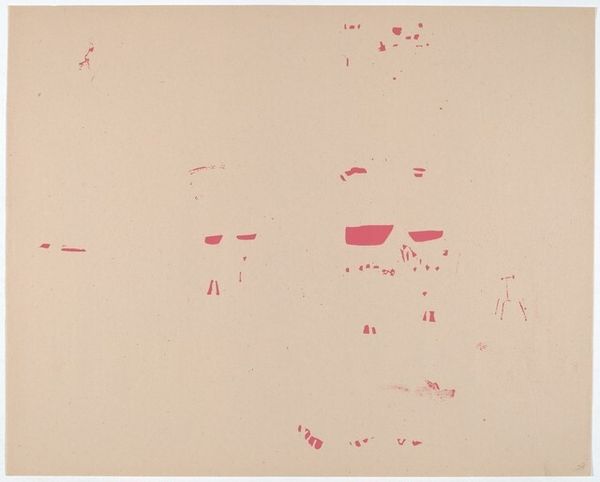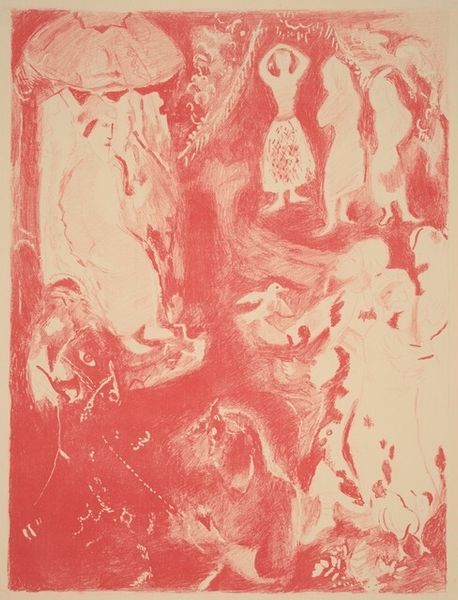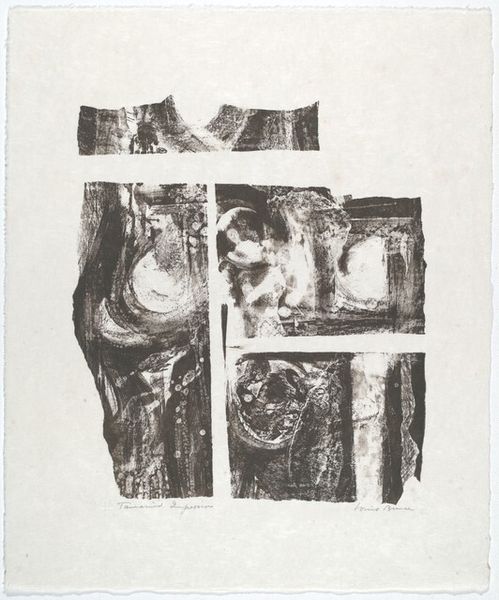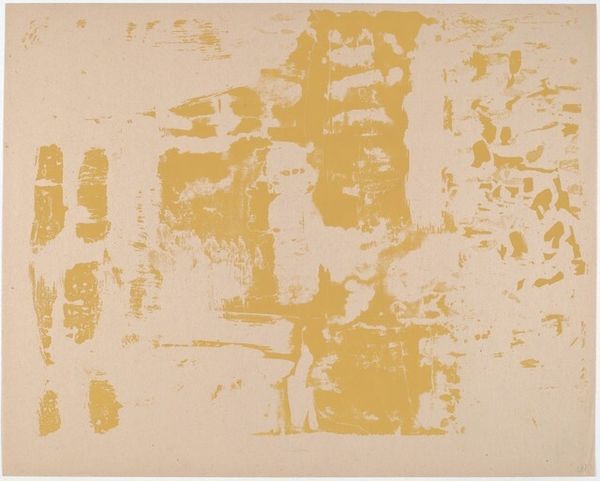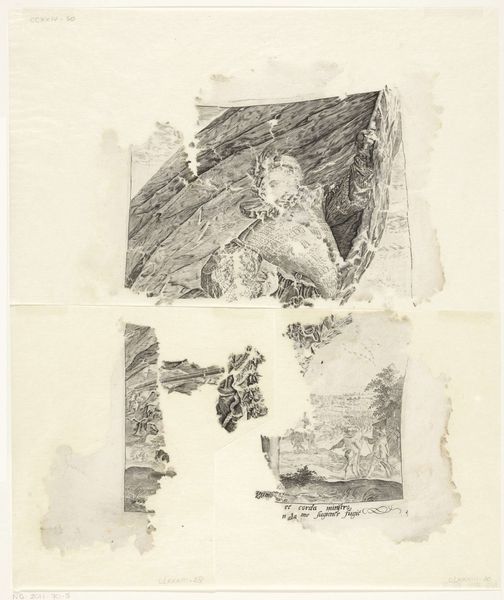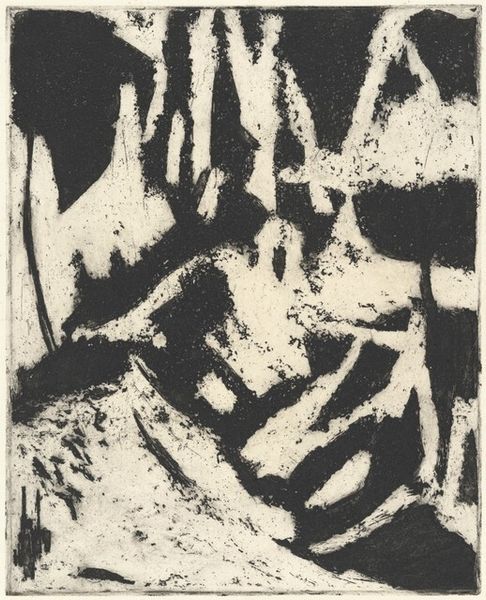
graphic-art, collage, print, linocut
#
abstract-expressionism
#
graphic-art
#
collage
#
linocut
# print
#
linocut
#
linocut print
Copyright: National Gallery of Art: CC0 1.0
Curator: Corita Kent's linocut print, "The Beginning of Miracles: VII," created in 1953, offers a striking composition. Editor: Immediately, I notice the bold, rough texture. The red ink against the paper creates an almost raw, primal feel. Is that intentional roughness somehow tied to the miracle alluded to in the title? Curator: I think that’s insightful. Kent's work, particularly in this early period, engages with spiritual themes through the lens of social consciousness. The crudeness is likely part of the deliberate materiality. Consider the cultural landscape of the 1950s, where the role of religion and individual belief were being reshaped by global events. Her choice of linocut, traditionally a more accessible and reproducible medium, invites conversation with the dominant artistic traditions, subtly questioning notions of what fine art is. Editor: Right, it is hard to ignore that this is not painting or traditional sculpture. The linocut immediately speaks to reproducibility and to a potential widespread audience. How does this medium affect her message, practically and symbolically? Curator: The use of linocut is key to the politics of accessibility in her art. But look at these central figures too. To me they look iconic and ritualistic. These visual strategies democratize both spiritual seeking and art appreciation. Editor: I can see that, especially given Kent’s background as a nun involved in teaching and community activism. It’s interesting how the form reflects her own commitment to accessibility, not just to high art status. And while abstract expressionism leans individualist, her prints can suggest both collectivity, labor, and even devotion. I think I read that the images include figures she found from magazine advertisements. Is that correct? Curator: Absolutely. That inclusion of existing imagery recontextualizes the everyday; finding the divine or at least a reflective image in ordinary items available to all. The print’s composition creates an emotional charge beyond its aesthetic qualities. I also sense how Kent prompts us to see beyond the surface and find the miracles within the mundane. Editor: Definitely something to keep in mind while walking through this collection. This has reminded me that to understand art we must look for more than just surface aesthetics; there is the touch of production as a key site for exploring values. Curator: Indeed. Seeing "The Beginning of Miracles: VII" through both lenses has only deepened its complex and socially conscious power.
Comments
No comments
Be the first to comment and join the conversation on the ultimate creative platform.

